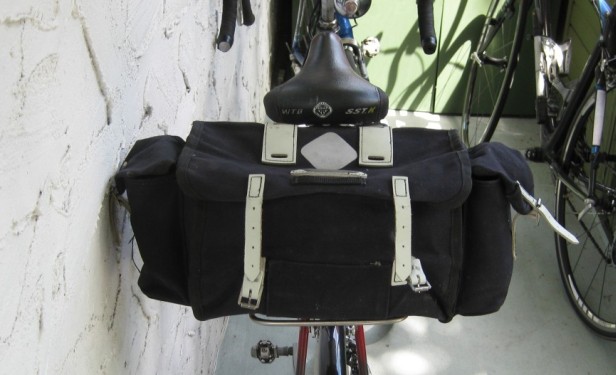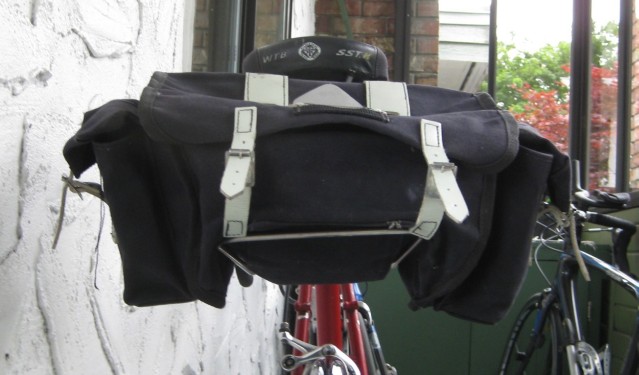
Classic Carradice bag droop
| Odds & Ends |
|

Do you suffer from bag droop? I sure do. But now finally something can be done about it.
Hi. My name is Eric, and I'm an aging ultra cyclist/randonneur. For my recent 50th birthday I made the big move from a compact/aerodynamic seat post wedge bag, to a big floppy old Carradice "Pendle" bag. Now I have room for the virtually endless amount of cycling tools, replacement parts, clothing and emergency food that us older marathon cyclists carry but never use. It's all about peace of mind. For me, a full Pendle means safety, security and comfort.
There was a problem though. When I first mounted my Pendle on the "Bagman" rack (that confidently promises full bag support) I noticed that the Bagman's ridged lateral tubing divided my floppy Pendle into three compartments. This seriously compromised the orderly packing of the bag.
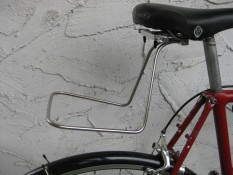 |
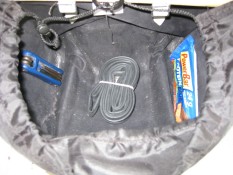 |
|
|
|
My solution was found in the wood scraps pile in the junk room of our condo. I sized an abandonned 1/8 inch thick piece of board to cover the underside of my Pendle, and then drilled holes so that the board could be zap tied to the Bagman.
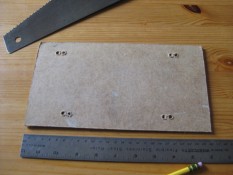
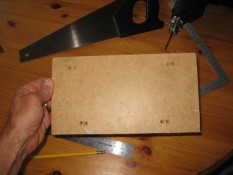
My bag board is 26 cm wide which is just slightly less than the distance between the cloth piping at the edges on the bottom of the Pendle. This sizing keeps the bag centred. The front-to-back size is 14 cm, which is big enough to avoid front or back edge drooping, but small enough to keep your board hidden from other cyclists... No one needs to know that you need bag support assistance.
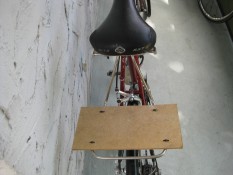 |
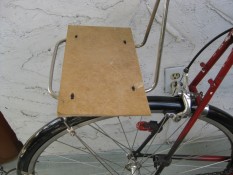 |
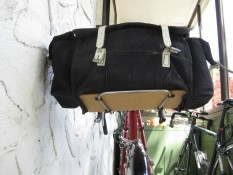 |
|
|
|
|
So why not firm up your own Pendle, or your Nelson Longflap if you're lucky enough to have one of the big ones, with a Carradice bag board. You'll be impressed by the difference. Like me, you can look forward to many happy kilometres of droop-free cycling.
